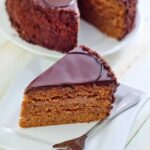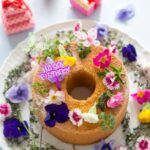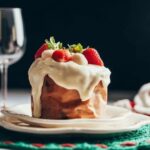Do you want to learn how to make cake decorations with buttercream icing? Buttercream icing is a versatile and delicious way to adorn your cakes with beautiful and intricate designs.
In this article, we will explore the art of creating stunning cake decorations using buttercream icing, from understanding the different types of buttercream to mastering essential tools and techniques for piping. Whether you’re a beginner or experienced baker, you’ll find useful tips and inspiration for showcasing your creativity through buttercream decorations.
Buttercream icing is a classic choice for decorating cakes, known for its smooth texture and creamy flavor. Understanding the different types of buttercream – such as American, Swiss, Italian, and French – can help you achieve the perfect consistency and taste for your cake decorations. With the right tools and ingredients, you can create professional-looking designs that will impress your friends and family.
In the following sections, we will delve into essential tools and ingredients for making cake decorations with buttercream icing, as well as provide a step-by-step guide to making buttercream icing. Additionally, we will explore various techniques for piping buttercream decorations, offer tips for achieving perfect results, share decorating ideas and inspiration, discuss how to store and preserve buttercream decorated cakes, and troubleshoot common issues that may arise during the process.
Whether you’re looking to create simple floral designs or intricate patterns, this article will equip you with the knowledge and skills needed to master the art of cake decorating with buttercream icing.
Understanding Different Types of Buttercream Icing
Buttercream icing is a versatile and delicious topping for cakes, cupcakes, and other baked treats. There are several different variations of buttercream icing, each with its own unique flavor and texture. Here are some of the most common types of buttercream icing:
- American Buttercream: This is the easiest type of buttercream to make, as it only requires a few basic ingredients – butter, powdered sugar, vanilla extract, and milk or cream. It has a sweet and creamy texture that holds up well for piping decorations.
- Swiss Meringue Buttercream: This type of buttercream is made by whipping together egg whites and granulated sugar until stiff peaks form, then adding softened butter and flavorings like vanilla or fruit purees. The result is a silky smooth frosting that is less sweet than American buttercream.
- Italian Meringue Buttercream: Similar to Swiss meringue buttercream but with a more complex preparation process involving boiling sugar syrup. Italian meringue buttercream has a light and airy texture with a glossy finish.
Each type of buttercream icing has its own strengths and weaknesses when it comes to decorating cakes. American buttercream is best for simple decorations due to its thicker consistency, while Swiss and Italian meringue buttercreams are great for creating more intricate designs.
It’s important to choose the right type of buttercream icing based on your personal preferences and the specific requirements of your cake decorating project. By understanding the differences between these types of buttercream icing, you can select the best option for achieving your desired results.
Essential Tools and Ingredients for Making Cake Decorations With Buttercream Icing
To create beautiful cake decorations with buttercream icing, it is essential to have the right tools and ingredients on hand. Whether you are a beginner or an experienced baker, having the proper equipment and quality ingredients is crucial for achieving stunning results.
Tools for Cake Decoration
Some essential tools for making cake decorations with buttercream icing include piping bags, piping tips, offset spatula, bench scraper, turntable, and cake decorating comb. Piping bags come in various materials such as disposable plastic or reusable cloth, while piping tips come in different shapes and sizes for creating various designs and textures.
An offset spatula is useful for smoothing out the buttercream on the cake’s surface, while a bench scraper helps achieve clean edges. A turntable allows for easy rotation of the cake while decorating, and a cake decorating comb creates beautiful patterns on the sides of the cake.
Ingredients for Buttercream Icing
The key ingredients for making buttercream icing include unsalted butter, confectioners’ sugar (powdered sugar), vanilla extract or other flavorings, and heavy cream or milk. It is important to use high-quality butter for a rich and smooth consistency in the icing. Confectioners’ sugar should be sifted before use to ensure a smooth texture without lumps.
Vanilla extract adds flavor to the buttercream, but other extracts such as almond or lemon can also be used for different flavor variations. Additionally, heavy cream or milk helps adjust the consistency of the buttercream to make it easier to work with during decoration.
Having these essential tools and ingredients ready will set you up for success in creating stunning cake decorations with buttercream icing. With practice and creativity, you can elevate your cakes with beautifully piped designs that will impress your friends and family at any celebration.
Step-by-Step Guide to Making Buttercream Icing
Buttercream icing is a versatile and delicious frosting that can be used to decorate cakes, cupcakes, and other baked goods. Making your own buttercream icing from scratch is easy and allows you to customize the flavor and consistency to suit your preferences. Here is a step-by-step guide to making buttercream icing at home.
Start by gathering your ingredients, which typically include butter, powdered sugar, vanilla extract, and a small amount of milk or cream. Soften the butter at room temperature before beginning, as this will make it easier to mix with the other ingredients. In a large bowl, beat the softened butter until it is smooth and creamy.
Next, gradually add the powdered sugar to the butter, mixing on low speed until it is fully incorporated. Scrape down the sides of the bowl as needed to ensure that all of the ingredients are well combined. Once the powdered sugar is incorporated, add in the vanilla extract and a tablespoon of milk or cream. Continue beating the mixture on medium-high speed until it is light and fluffy.
After making your basic buttercream icing, you can experiment with different flavor variations by adding cocoa powder for chocolate buttercream or fruit purees for a fruity twist. Adjusting the amount of powdered sugar or liquid can also help you achieve your desired consistency for piping decorations onto your cakes. With this simple step-by-step guide, you’ll be able to create delicious homemade buttercream icing for all of your cake decorating needs.
Techniques for Piping Buttercream Decorations
When it comes to cake decorating, piping buttercream icing is a crucial skill to master. With the right techniques, you can create stunning and intricate designs that will elevate your cakes to the next level. Here are some essential techniques for piping buttercream decorations:
- Mastering the Pressure: One of the most important aspects of piping buttercream decorations is mastering the pressure. Squeezing the piping bag too hard can result in messy and uneven lines, while not applying enough pressure will make it difficult to control the flow of icing.
- Consistency of Buttercream: The consistency of your buttercream icing is key to successful piping. If the icing is too stiff, it will be difficult to pipe intricate designs, while icing that is too soft may not hold its shape.
- Holding the Piping Bag: The way you hold the piping bag can greatly impact your ability to pipe decorations. Hold the bag with a firm grip using your dominant hand, and guide the tip with your other hand for better control.
These techniques will help you achieve clean and professional-looking buttercream decorations on your cakes. Practice makes perfect, so don’t be afraid to experiment with different designs and have fun with your creations.
Tips for Achieving Perfect Buttercream Cake Decorations
Creating beautiful buttercream cake decorations requires patience, practice, and attention to detail. One of the most important tips for achieving perfect buttercream cake decorations is to ensure that your icing is the right consistency.
If the icing is too stiff, it will be difficult to pipe, and if it is too soft, your decorations will not hold their shape. To achieve the ideal consistency, it’s essential to add liquid in small increments and mix well until you reach the desired texture.
Another tip for achieving perfect buttercream cake decorations is to invest in high-quality piping tips and bags. Different tips can create a variety of designs and textures, so having a selection of tips on hand will give you more options for decorating your cakes. Additionally, using sturdy piping bags will make it easier to control the flow of icing and create precise details in your decorations.
In addition to consistency and tools, temperature also plays a crucial role in achieving perfect buttercream cake decorations. It’s important to work with cool hands in a cool environment when handling buttercream icing. If the room is too warm or if your hands are warm, the icing can become too soft and difficult to work with. Placing finished decorations in the refrigerator for a few minutes before placing them on the cake can also help them maintain their shape.
| Tip | Description |
|---|---|
| Consistency | Ensure that your icing is the right consistency by adding liquid in small increments and mixing well. |
| Tools | Invest in high-quality piping tips and bags to create a variety of designs and textures. |
Decorating Ideas and Inspiration for Buttercream Icing
When it comes to decorating cakes with buttercream icing, the possibilities are endless. Whether you’re a beginner or a seasoned baker, there are countless creative ideas and inspirations to explore. One popular technique is creating floral designs using buttercream. This can include piping roses, daisies, or any other type of flower directly onto the cake. Additionally, you can use different piping tips to create various textures and patterns, such as ruffles or waves.
Another popular trend in buttercream cake decorations is the use of ombré or gradient colors. This involves blending two or more colors of buttercream together to create a seamless transition from light to dark (or vice versa). This technique adds a modern and stylish touch to any cake design. Furthermore, incorporating edible decorations such as pearls, sprinkles, or edible flowers can elevate the overall look of the cake and add a touch of elegance.
For those looking for a more personalized touch, consider incorporating monograms, initials, or custom messages onto your buttercream decorated cake. This could be achieved through piping techniques or using fondant cutouts.
Finally, drawing inspiration from nature by incorporating elements such as leaves, vines, or even seasonal elements like snowflakes for winter-themed cakes can add a unique and whimsical flair to your buttercream cake decorations. The key is experimentation and finding what works best for your skill level and personal style.
How to Store and Preserve Buttercream Decorated Cakes
Storing and preserving buttercream decorated cakes is essential to maintain their freshness and appearance. Proper storage ensures that the cake decorations remain intact and the flavors are preserved for a longer period of time. Here are some tips and techniques for storing and preserving buttercream decorated cakes:
Refrigeration
After decorating a cake with buttercream icing, it is important to store it in the refrigerator to prevent the buttercream from melting or losing its shape. Place the cake in an airtight container or cover it with plastic wrap to protect it from absorbing any odors or flavors from other foods in the fridge.
Freezing
If you need to store the cake for an extended period of time, consider freezing it. To freeze a buttercream decorated cake, first place it in the refrigerator uncovered to allow the icing to harden. Once the icing is firm, wrap the cake tightly with several layers of plastic wrap, followed by a layer of aluminum foil. Properly wrapped, the cake can be stored in the freezer for up to three months without compromising its taste or texture.
Thawing
When it’s time to enjoy your buttercream decorated cake, proper thawing is crucial. Remove the wrapped cake from the freezer and let it thaw in the refrigerator overnight. This gradual thawing process prevents condensation from forming on the icing, which could cause colors to bleed and decorations to become soggy.
By following these storage and preservation techniques, you can ensure that your beautifully decorated buttercream cakes stay fresh, visually appealing, and delicious for as long as possible.
Troubleshooting Common Buttercream Icing Issues
Even with the best intentions and careful preparation, sometimes things can go wrong when working with buttercream icing. One of the most common issues that decorators face is the buttercream being too stiff or too runny.
If your buttercream is too stiff, it can be difficult to work with and may not stick well to the cake. On the other hand, if it is too runny, it will not hold its shape and your decorations will not turn out as planned.
Another common problem is air bubbles in the buttercream. These pesky bubbles can ruin the smooth finish of your cake decorations. To avoid this issue, try using a paddle attachment on your mixer instead of a whisk attachment when making your buttercream. Additionally, gently tapping the piping bag on the counter after filling it with icing can help release any trapped air.
Color fading or bleeding in buttercream icing can also be a source of frustration for decorators. To prevent color from fading, be sure to use gel-based food coloring instead of liquid food coloring, as gel colors are more vibrant and less likely to fade over time. To avoid bleeding between colors, make sure that each layer of icing has had enough time to crust before adding another color on top.
By addressing these common issues and implementing effective solutions, you can ensure that your buttercream cake decorations turn out beautifully every time. With a bit of troubleshooting know-how, you can confidently tackle any challenges that arise while working with buttercream icing.
Conclusion
In conclusion, mastering the art of cake decorations with buttercream icing can truly elevate your baking skills to the next level. Understanding the different types of buttercream icing and having the essential tools and ingredients are just the beginning. With a step-by-step guide and techniques for piping buttercream decorations, you can create stunning designs that will impress any guest at your table.
It’s important to remember that practice makes perfect when it comes to working with buttercream icing. Don’t be discouraged if your first few attempts aren’t as flawless as you’d like them to be. With patience and dedication, you’ll soon be able to achieve perfect buttercream cake decorations every time.
Whether you’re decorating a birthday cake, wedding cake, or just experimenting with your baking skills, the possibilities for buttercream icing decorations are endless. Let your creativity run wild and use the tips and ideas provided in this article as inspiration for creating your own unique designs. With proper storage and troubleshooting knowledge, you can ensure that your buttercream decorated cakes remain beautiful and delicious for days to come. So go ahead, showcase your masterpiece and let your creativity shine.
Frequently Asked Questions
Can You Make Decorations Out of Buttercream?
Yes, decorations can certainly be made using buttercream. Buttercream is a versatile frosting that can be used to create various decorative elements on cakes and cupcakes. From piping flowers and intricate designs to creating textured finishes, buttercream offers a lot of flexibility for decorating desserts.
How to Decorate a Cake With Buttercream Frosting?
Decorating a cake with buttercream frosting involves several techniques such as piping, spreading, and creating different textures. To start, it’s important to have the right consistency of buttercream – not too stiff or too runny.
Using a piping bag fitted with different tips allows for creating borders, writing messages, and making detailed designs. Additionally, using an offset spatula can help in spreading and smoothing out the frosting for an even finish.
What Is the Best Type of Buttercream Frosting for Decorating?
The best type of buttercream frosting for decorating depends on personal preference and the specific project at hand. American buttercream is quick and easy to make, but some find it overly sweet. Swiss meringue buttercream is lighter in texture and less sweet, making it great for intricate decorations.
Italian meringue buttercream is stable enough for warm climates and holds its shape well for piped designs. Ultimately, the best type of buttercream frosting for decorating is the one that suits your taste preferences and the needs of your particular dessert design.

Welcome to my blog about home and family. This blog is a place where I will share my thoughts, ideas, and experiences related to these important topics. I am a stay-at-home mom with two young children. I hope you enjoy reading it! and may find some helpful tips and ideas that will make your home and family life even better!





